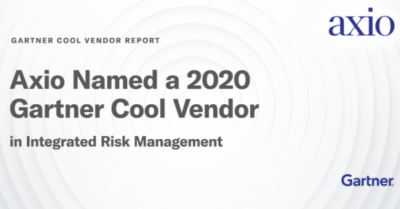It’s time to start seeing risk management with more clarity—download our paper to learn more .
Most companies are still using outdated and unreliable approaches to cyber risk management. These approaches are often not sufficient. Here are three of the top reasons why your company must consider moving to a new cyber risk management model:
1. Qualitative methods leave you exposed.
Are you still using “high, medium, low,” or “red, yellow, green” to measure your company’s cyber risk? If so, you have essentially no visibility into your organization’s real financial exposure. Such qualitative approaches do not give your leadership the information they need to know how and where to invest to minimize their risk effectively. And, these antiquated methods do not generate defensible outcomes.
You need an approach to cyber risk management that helps you decide which controls—financial, technical, physical, administrative—to prioritize for investment and when it makes financial sense to accept risk. The only way for organizations to understand how cyber events could impact their bottom line is by calculating the potential financial costs of—or quantifying—their risk.
A 2018 Ponemon study found that the majority of organizations (54 percent) are not measuring, and therefore don’t understand, the business costs of cyber risk. The report concludes that organizations are unable to make risk-based business decisions backed by accurate and quantifiable metrics, resulting in a lack of actionable insight for the C-suite and board of directors.
2. There is a dangerous disconnect between CEOs and cybersecurity executives.
Are you framing risk in a way that your CEO and others in the C-suite can understand easily? Most cybersecurity leaders are not. This means CEOs are not fully comprehending what cybersecurity leaders are saying—and poor or uninformed decision making is happening.
High-profile cyberattacks in recent years, such as the infamous Equifax data breach when hackers stole the information of 147 million Americans, highlight what can happen when CEOs and cyber leaders aren’t in sync. Research firm Gartner analyzed the former Equifax CEO’s congressional testimony regarding the incident and found “a disconnect between executive understanding and levels of cybersecurity capabilities in the organization.”
To solve this problem, cybersecurity leaders must talk to CEOs and other executives in a language they understand—business terms. To do this, you need to know the financial impact of cyber risk—you need to quantify it. By quantifying your company’s cyber risk, you will have the information you need to show the CEO and the C-suite how an incident could impact major business areas such as production, logistics, reputation, and legal.
3. Boards are frustrated—tired of fear and uncertainty.
Boards are not holding back when it comes to changing out leadership after cyber events. Equifax is far from the only example. Breaches over the past several years have seen the CEOs, CIOs, and CISOs of major companies, including Target, Sony Pictures, Capital One, among many others, leave their prominent posts.
There is also growing pressure on boards. Regulations in Europe and the U.S. are tighter. Moody’s has started incorporating a company’s risk of a major cyber-attack into its credit ratings. And, the SEC has updated cybersecurity disclosure guidance, now imploring companies to disclose their understanding of cyber risk versus just disclosing events after the fact.
For your board members to follow their fiduciary duty, they need a clear picture of your company’s cyber risk—in business terms.
Axio’s Approachable Method for Cyber Risk Quantification
You may have experienced one or more of these three problems with the old ways of doing cyber risk management already. If not, it is a matter of time. Perhaps you or your organization are putting off cyber risk quantification because you think: “We aren’t ready” or “It’s too difficult.”
Axio’s technique and SaaS platform that powers it, described in the paper available for download on this page, gives you the tools you need to help your organization determine how to guard against losses today and plan for how to protect its operations tomorrow.
Axio’s method follows a straightforward four-part process:
- Identify mission-central parts of the business that could be impacted by a cyber event
- Analyze the financial impact of plausible cyber events
- Optimize the entire portfolio of controls
- Manage cyber risk on an ongoing basis
Download Making the Business Case for Cybersecurity Investment now to:
- Gain a better understanding of the business value of cyber risk quantification
- Learn how Axio makes cyber risk quantification approachable, efficient, and actionable
- Get an overview of the Axio360 platform




